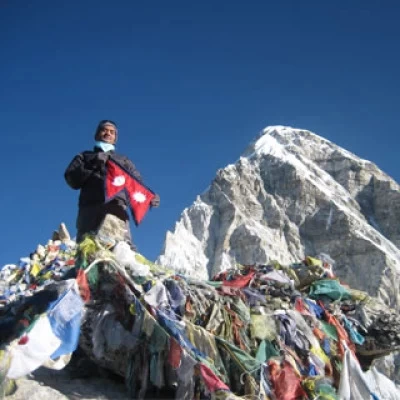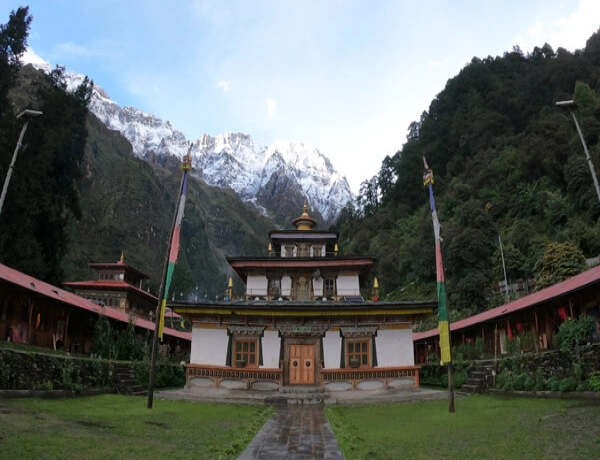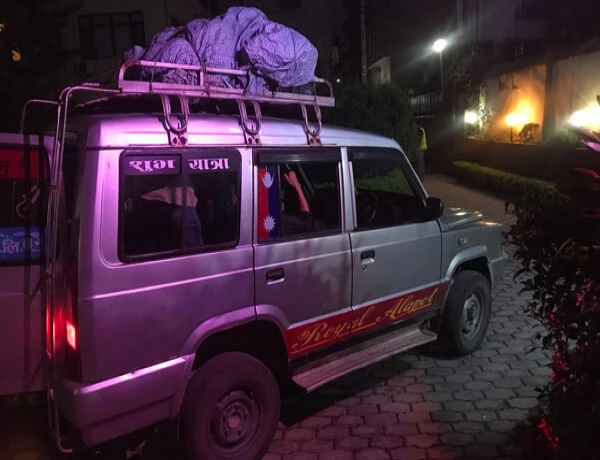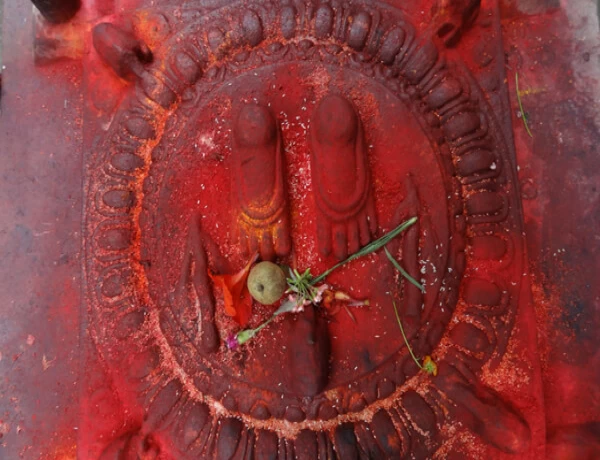-
Since the outbreak of coronavirus, the world is going through a pandemic. After that, traveling around the world just became a talk. Finally, after the years of the pandemic and closed borders, now traveling is possible again. But the real question is, “Is Nepal safe to travel to?”
If you are searching for the answer, then yes, Nepal is safe to travel from Coronavirus. However, some documents are required before traveling to Nepal. Don’t worry! We will provide complete guidelines before traveling to Nepal during the coronavirus.
Is Nepal Safe to Travel
Coronavirus (CoV) is a family virus that is spread and transmitted between animals and people. Severe Acute Respiratory Syndrome (SARS-CoV) and Middle East Respiratory Syndrome (MERS-CoV) are some of the fatal diseases caused in the past by various strands of CoV. Among coronaviruses, the novel coronavirus (COVID-2019) is a new strand of virus that was previously not found in human beings.
This virus causes various illnesses related to the respiratory system, like the common cold, fever, and, in severe cases, pneumonia. The first case of COVID-2019 was reported in Wuhan, China, on December 31, 2019. As of now, the source of the outbreak of COVID-2019 has not been confirmed.
What is Coronavirus (COVID-19)?
Severe Acute Respiratory Syndrome Coronavirus 2 (SARS-CoV-2) is the disease that causes Coronavirus, also known as COVID-19 (Coronavirus Diseases 2019). The virus was first discovered in Wuhan, China, in November 2019. Then, the virus leads to a worldwide pandemic.
COVID-19 is a contagious disease that transfers through contact with an infected person. Additionally, they can spread the virus by breathing in airborne droplets or particles. The risk of spreading the virus is high when a mass of people gather.
When a person contracts the coronavirus, the situation may be minor or extremely serious. If the condition is mild, it cannot be that serious and is treatable with a home remedy. But when the case is too critical, he/she should take it to the hospital for advanced treatment.
After the pandemic, lots of testing methods have been developed to diagnose the virus. The virus's nucleic acid can identify the disease using three common methods.
On the test, a nasopharyngeal swab is used for a real-time reverse transcription-polymerase chain reaction (rRT-PCR), transcription-mediated amplification (TMA), and reverse transcription loop-mediated isothermal amplification (RT-LAMP).
Maintaining social distance is the best way to stop the coronavirus from spreading, and wearing a mask properly is that distance. Always wash your hands with soap and water. Another alternative way is to use alcohol-based hand rubs.
Coronavirus Symptoms
When a person contracts the coronavirus, he does not immediately exhibit symptoms. On average, it takes two to seven days to show symptoms after infection. In some cases, it can even take up to 2 weeks.
The common symptoms of Coronavirus include headache, loss of smell and taste, common cold, cough, muscle pain, sore throat, fever, diarrhea, and breathing difficulties. An infected person may have only some symptoms but can change in the time interval.
Moreover, the symptoms are variable. It can be a mild to critical illness. As per the record, 81% have a mild illness (some got mild Pneumonia), 14% got severe symptoms like dyspnea, hypoxia, and lung infection too, and 5% suffer from critical illnesses like respiratory failure, multiorgan malfunction, and shock.
Symptoms of Corona virus-affected people
The symptoms of COVID-2019 are listed below:
- Common cold
- Fever
- Shortness in breathing
- Pneumonia
- Kidney failure
Coronaviruses that caused SARS-CoV and MERS-CoV both dealt with people suffering from respiratory and enteric symptoms. Similar to this, COVID-2019 victims reportedly experience a common cold, mild to severe fever, common cold, and shortness of breath. The symptoms start with tiredness and slight fever in affected people. If the affected person’s immune system is weak, the virus can lead to deadly pneumonia and even chances of organ failure.
The first reported cases of death in China show that the patients were suffering from pneumonia. The incubation period of the virus is estimated to be 14 days so the symptoms can come from the second day or within 14 days.
The virus can be spread from person to person, so it is advised that people protect themselves by following standard hygiene measures such as avoiding close contact with people who are sick, using masks, and washing hands regularly with soap and water.
Coronavirus Treatment
Several vaccines have been approved and distributed in many countries. Still, there is no specific cure or medicine for the disease. The purpose of the vaccine is to boost immunity and also control the spread of the virus.
Most of the cases are mild. They can be treated by staying home in isolation. In addition, the patient can take paracetamol and painkiller tablets. Also, a healthy diet and good hygiene are recommended.
If the case is critical, then it takes more serious treatment or may need to be admitted to the hospital. Those with low oxygen levels and respiratory failure need Noninvasive Ventilation or Mechanical Ventilation. Furthermore, patients are admitted to the Intensive Care Unit (ICU).
Self-care is the best treatment for Coronavirus disease 2019 (COVID-19). Always wear a mask and maintain a physical distance. Always remember Palliative Care is the best treatment for critical patients.
Coronavirus in Nepal
The coronavirus pandemic in Nepal is also a part of the worldwide pandemic of Coronavirus Disease 2019 (COVID-19). The first case record was in Wuhan, China, in November 2019 from the Huanan Seafood Market. Then, the pandemic hits all around the world.
The first Coronavirus case recorded in Nepal was confirmed on 23 January 2020, when a 31-year-old student returned from Wuhan, China. It was also the first case in South Asian countries. As the cases were increasing, Nepal declared a country-wide lockdown on 24 March 2020.
As the country went through the lockdown, all the borders were sealed off in addition to flights too (except planes carrying goods). All educational institutes, business areas, and accommodations were closed. More quarantine centers were built, and labs were upgraded. Strong rules and regulations were implemented to control the outbreak of the virus.
Nepal initiates lockdown after confirming the second case on 23 March 2020. Likewise, Nepal confirms its first death due to the coronavirus on 14 May 2020. After four long months, the lockdown comes to an end. Only partial business areas were opened, and schools were closed as usual.
The second wave of coronavirus highly affected Nepal, which compels to lockdown again. The lockdown didn’t last long but was highly affected. Patients flooded hospitals, and the medical staff caught an infection as well.
Again, the wave of the Omicron variant B2 also affected Nepal. The virus was known before the end of 2021. After the start of 2022, the virus spread rapidly. Although it was not as harmful as the first and second waves. Recently, the situation is under control, and we hope the pandemic will end soon.
At first, Nepal was classified as ‘Very Vulnerable’ by WHO. But later on, they were reclassified as ‘less risk’.
Is Nepal Safe from Coronavirus?
No country is safe from Coronavirus. Every year a new variant is discovered. Talking about the safety of the coronavirus in Nepal, since the outbreak of the Omicron variant, the wave has affected Nepal too. Cases increased rapidly.
Considering the safety in Nepal, the virus has less impact than in any other country. The neighboring country, India, faces a huge loss in the second wave. Thanks to God, Nepal has not experienced such a huge loss. However, the number of deaths has climbed to over 11,000.
As the number of infected people is increasing, the recovery number is also increasing in Nepal. In comparison to the initial phase, the number of infected people has relatively decreased. As the days pass, the situation is getting better.
Nepal is hardly safe from Coronavirus. However, the country doesn't pose much of a threat.
Is it safe to travel to Nepal for Coronavirus?
“Is Nepal Safe to Travel from the Coronavirus?” is the common question we got. If you are searching for the answer, then Yes! Nepal is safe to travel with Coronavirus. It is safe to visit Nepal now; you can go to Nepal right now.
The most affected area of Nepal is Bagmati Province and Kathmandu is highly affected. Other parts of the country have moderate effects from the virus.
Trekking areas are safe from Coronavirus. Relatively, trekking areas are the safest place in the country. As well as your favorite hub, ‘Pokhara’ holds less risk. So, the roundup answer is Yes! Nepal is safe to travel from the Coronavirus.
Nepal Travel Advisory 2022-March 10th
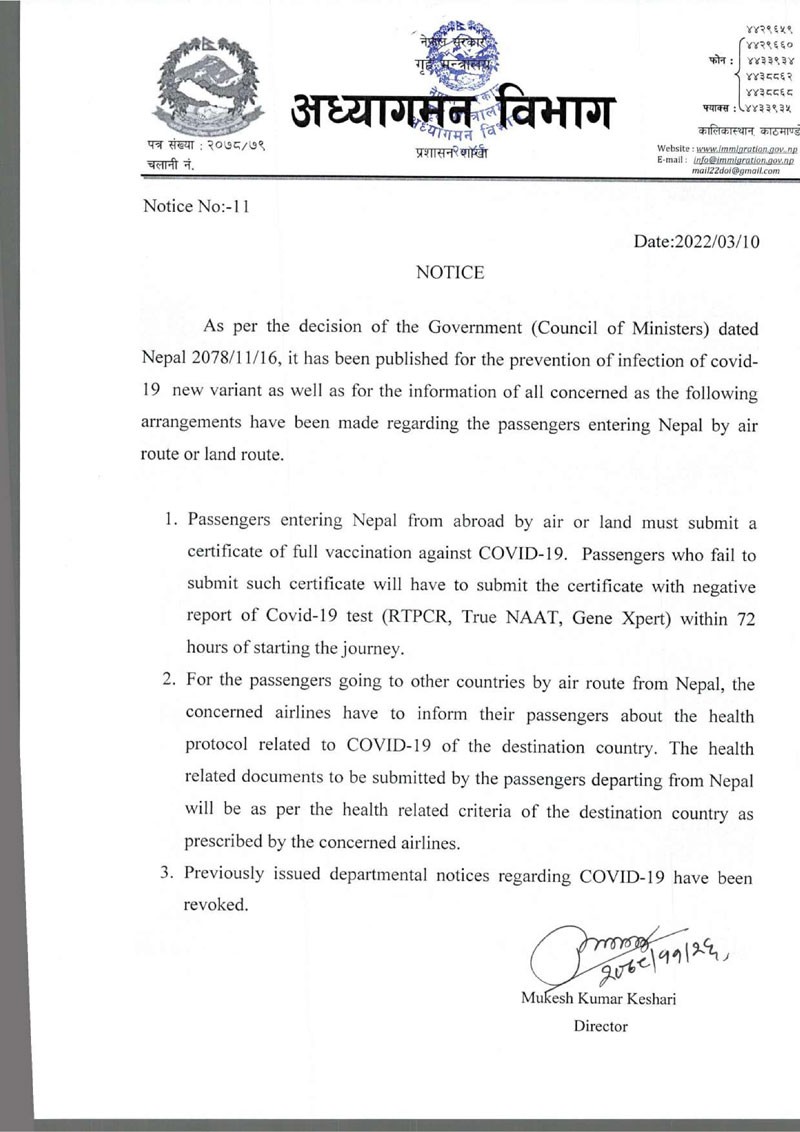
Are you wondering!!! How to travel to Nepal during Coronavirus? Is it safe to travel to Nepal in 2022? Is there a travel ban on Nepal?
Good news! There is not any travel ban to Nepal; it is safe to travel in Nepal now. According to the Nepal Government Travel Advisory, now traveling to Nepal during a coronavirus is easier. If you have a certificate of full dose vaccination, then there will not be any trouble. Nepal: No RT-PCR test is required for fully vaccinated travelers.
Here, we have provided complete instructions on how to travel to Nepal during Coronavirus:
Travelers with a full dose of Vaccination:
Visa on Arrival:
If you are fully vaccinated earlier than 14 days before entering Nepal, you will be eligible to travel to Nepal. You will need the following documents to apply for the visa-on-arrival:
A passport that has access to visa-on-arrival (some countries don’t have a visa-on-arrival policy).
- COVID-19 full vaccination certificate; the last dose is taken 14 days before arriving in Nepal sufficient.
- If you do not have a COVID-19 full vaccination certificate, then you need to submit a COVID-19 test report showing negative results before 72 hours of entering Nepal. It is not required for children below 5
- A printed copy of an online form, the International Traveler Online Arrival Form, by logging in to ccmc.gov.np.
Impact of Coronavirus on Tourism in Nepal
Coronavirus has a huge effect on tourism in Nepal. The virus has an impact on every tourist service industry and forces postponements. Those whose livelihood depends on tourism have gone through a hard time since the lockdown.
Tourism is a large industry in Nepal, which covers 8% of the national GDP. Tourism in Nepal has been providing employment for millions of people.
Similarly, other tourist sectors for example hotels, adventure activities, clubs, historic heritages, etc. have been facing a huge loss. It is estimated that the tourism sector has lost $330 million due to the lockdown.
Nepal is blessed with magnificent snowcapped Cap Mountains along with a diverse landscape. The country is the top destination for trekkers. Before Coronavirus, millions of travelers visit Nepal. But now, the arrival rate has decreased drastically to 10% since the outbreak of the pandemic. One of the most popular trekking routes in the world, the Mt. Everest Base Camp Trek, was also affected badly, where almost half percent of visitors decreased. The visitors inter in Sagarmatha National Park 34412 in 2071/72, 27794 in 2072/73, 45112 in 2073/74, 56303 in 2074/75, 57289 in 2075/76, and 31533 in 2076/77, according to the Nepal Tourism Statistics 2020 (page 61/61).
However, the Nepali government is implementing new plans and policies to promote tourism in Nepal. I hope the pandemic will end soon and tourism will get back to normal again.
Here is a list of the 10 Most Popular Treks in Nepal for 2023, 2024:
- Everest Base Camp Trek: -12 Days
- Everest Base Camp Trek and Fly Back Helicopter (9 Days)
- Everest 3 Passes Trek -21 Days
- Annapurna Base Camp Trek via Poon Hill (12 Days)
- Upper Mustang Trek: -15 Days
- Manaslu Circuit Trek: -14 Days
- Kanchenjunga Circuit Trek: -16 Days
- Nar Phu Valley Trek: -9 Days
- Langtang Valley Short Trek, 7 Days
- Makalu Base Camp Trek -20 Days
The Vulnerability of Coronavirus in Nepal
Nepal is one of the neighboring countries of China, so there is a high chance of Nepal being in the danger zone. Along with it, Chinese nationals account for the largest number of tourists coming into the country. The number of incoming tourists from other COVID-2019-affected Asian countries like Japan and Thailand is also high. There are also a large number of Chinese people living in Nepal. This has made the country vulnerable to the COVID-2019 outbreak.
Coronavirus and its Impacts on Tourism in Global and Nepal
It is without a doubt that the tourism sector has been put to a halt because of the virus outbreak. Chinese tourists account for a significant role in the boom of global tourism. In European countries like France, Italy, and Germany, the tourism industry has been struck due to the fewer Chinese tourists.
Similarly, many Southeast Asian countries like China and Japan are also suffering from a massive loss as tourism contributes a considerable amount to their gross domestic product. Today, the outbreak has reduced travel frequency in all countries. In America, 70% of travel bookings to Southeast Asian countries in February and March have been canceled.
Like in other countries, the effect of the Coronavirus on tourism in Nepal is severe. The average number of Chinese tourists coming into Nepal has decreased by 1/3. Advanced bookings in hotels and travel agencies have also reduced significantly for the next 2-3 months.
Due to this reason, hoteliers, restaurateurs, and other people involved in the tourism industry are facing losses even though it is the peak season of travel. The tourist-jammed areas like Thamel and Pokhara seem empty in the last few weeks. Even though only 1 case has been confirmed yet, it can be considered that Nepal is still safe to travel to a certain extent.
Global situation of Coronavirus affected people on February 21, 2020
As of February 21, 2020, the number of COVID-2019 cases has reached 76,769 globally. In China alone, 75569 cases have been confirmed, with 2239 deaths. Since this virus outbreak started in Wuhan, China is the country that is at the highest risk.
Outside of China, eight deaths have been reported, with 1200 confirmed cases of COVID-2019 in 26 countries, including Japan, Korea, the Philippines, France, Iran, and many more. After China, the Diamond Princess Cruise holds the most confirmed cases with 634 people.
South Korea follows with confirmed cases of more than 200. An increasing number of new cases are being reported mostly in Asian countries, specifically those around China. In Europe and the western part, the cases are mostly reported of Chinese tourists who arrived earlier this month.
Coronavirus Cases in Nepal February 1, 2022
Nepal has been a victim of Coronavirus since the first wave, second wave, and omicron wave too. When Nepal confirms its first case on 23 January 2020. Now, the cases have almost reached a million.
As of 1st February 2022, Nepal has recorded a total of 953,913 cases out of 5,229,874 PCR tests. Among them, 862,898 have recovered, leaving 79,272 active cases. 141 have been quarantined. The death tally has reached 11,743.
How to be Safe from Coronavirus?
Since there is no vaccine or medicine to cure it until now, the World Health Organization (WHO) has advised everyone to take care of their hygiene. One can follow the mentioned measures to be safe from the virus.
- Wash your hands before and after using the toilet, after petting animals, and when your hands are visibly dirty. Alcohol-based sanitizers or hand rubs can also be used if there are no alternatives to soap.
- While coughing or sneezing, you must cover your mouth and nose with a tissue, handkerchief, or folded elbow. Proper masks also come effective in such cases. Through this simple action, you can prevent germs and saliva from coming in contact with other people. Do not sneeze or cough into your hands, as it may be transmitted to other people during contact.
- Since the virus transmits fast through human contact, it is advised to avoid crowds and maintain at least a 1 m (3 feet) distance from people, especially those who are coughing, sneezing, or have a fever. There is a high chance that you may breathe or touch the germs and saliva if you are close to such people.
- If you have a common cold or feel feverish, you must immediately head to the nearest hospital or health institution to take tests. If anyone you know is suffering from similar symptoms, it is best to advise them to go to the hospital as well.
- WHO has strongly recommended being cautious while visiting live animal markets. Additionally, they have advised eating thoroughly cooked meat only. Raw meats should be avoided at all costs.
Visit Nepal 2020 and Coronavirus
We have already talked about the impact of tourism on the Nepal coronavirus. The pandemic has compelled us to postpone the Visit Nepal 2020 campaign.
The Nepali government has launched its third tourism promotion campaign, Visit Nepal 2020. The first campaign was held in 1998 and the second in 2011.
The campaign aims to attract more than 2 million tourists, as in the previous year, 2019, the tourist count was 1.1 million.
Suraj Vaidya, the SAARC Chamber of Commerce and Industry's Chairman, organized Visit Nepal 2020. ‘Yeti’ was chosen as the campaign’s official mascot.
But when a pandemic hits the world, tourism halted all around the world. On March 22, 2020, the government of Nepal announced the cancellation of Visit Nepal 2020.
Conclusion
In a nutshell, Nepal is safe to travel with a coronavirus. Though the Nepali government has made some travel restrictions. But the restriction is made to control the spread of the virus. Still traveling to Nepal is possible. If you are trying to travel to Nepal during this ongoing pandemic, concern us at Nepal Mother House. We will make your trip more convenient and safe.
Tourism is one of the most lucrative businesses, and it has certainly cooled down due to this virus outbreak. However, to stop and contain this situation on time, it is crucial to stay updated and take on preventive measures. Even though some countries are free from its risks, there is no knowledge of what may happen. Thus, health must always be prioritized. It is necessary to take precautions because, as the saying goes, "Prevention is better than cure." It is still better to be prepared now than to face the consequences later. The First Wealth is Health! By God's grace, I pray that this pandemic will soon be under control!
